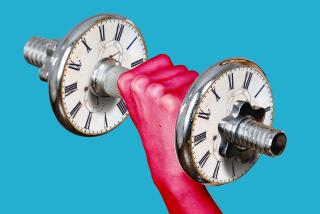Older Exercisers Able to Do More?
People aged 60 to 72 may be able to exercise more intensely than current recommendations specify. Researchers at Washington University in St. Louis found several indications in a study of 112 older women. For example, most of the older women exercising at their maximum ability by current guidelines perceived the exercise to be easier than did younger adults of both sexes exercising at their recommended maximum ability.
Moreover, older adults had lower levels of lactate, a substance produced by exercising muscles that limits exercise duration. The authors of the study, published in the February Journal of the American Geriatrics Society, noted that comparatively little information is available on how vigorously older people should exercise.
Bacterium May Be a Cause of Hypertension
Hypertension is usually attributed to risk factors, such as obesity and smoking, along with an inherited tendency toward the disorder. But according to a new theory, a bacterium called chlamydia pneumoniae might contribute to or cause hypertension.
The research is published in the February issue of the American Heart Assn.’s journal Hypertension. It suggests that the bug, which causes such infections as pneumonia and sinusitis and is a relative of the bacterium that causes the sexually transmitted disease chlamydia, may trigger mechanisms that clog arteries.
The link is far from proven, researchers say. They base their theory on a study conducted in England that examined 246 people, half of whom had severe high blood pressure. More than one-third of the group with hypertension had antibodies to chlamydia pneumoniae, compared with only 17% of the control group.
More studies are needed on the link. But, in the future, antibiotics might be one way to prevent hypertension.
Study: Tension Headaches Prevalent in U.S.
Occasional, severe headaches induced by stress are a common and highly disruptive condition among U.S. adults, according to a study in a recent Journal of the American Medical Assn. The study was one of the first large-scale efforts to assess the impact of tension headaches on society.
The researchers, from Johns Hopkins University in Baltimore, conducted a telephone survey of 13,345 people and found that 38.8% of the respondents reported having episodic tension-type headaches. Of those people, 8.3% lost work due to the pain, and 43.6% said the headache interfered with their job, school or home life.
In contrast, only 2.2% of those surveyed reported having chronic tension-type headaches. (Episodic refers to fewer than 15 headaches per month, chronic to 15 or more each month for at least six months.) The researchers found that episodic tension headaches were most common among people in their 30s and tended to decline after that.
Burn Study May Help Patients Choose Therapies
Deaths from burns are much more common when the victims are people 60 or older who have also inhaled a significant amount of smoke, according to a report in the Feb. 5 New England Journal of Medicine.
A combination of older age along with burns over 40% of the body and the presence of soot below the vocal cords increased the likelihood of dying to 90%, said researchers at Massachusetts General Hospital and the Shriners Burn Institute. If only two of those factors is present, the likelihood of death drops to 33%.
The findings may be useful because, if those factors are present, the families of patients might opt for more experimental therapies. For example, antioxidants are being studied to better understand their effectiveness in helping older burn victims.
Overall survival rates from burns have risen dramatically since the 1940s, the study notes. Today, about half of all people with burns involving 80% of the their body surface survive.
Compiled by SHARI ROAN






